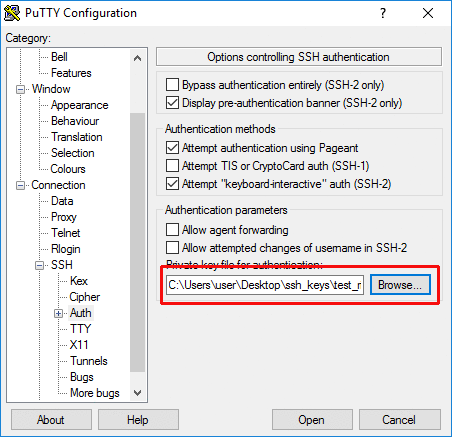
Ssh With Private Key Mac OS X And
It’s built into ssh, and is easy to set up and use. Ciphers aes128-ctr,aes192-ctr,aes256-ctr,arcfour256.SSH agent forwarding allows you to use your private, local SSH key remotely without worrying about leaving confidential data on the server you’re working with. SSH Server CBC Mode Ciphers Enabled SSH Weak MAC Algorithms Enabled. This doesn’t authorize all users of the computer to have SSH access.Mtv live hd biss key nilesat. To set up key-based SSH, you must generate the keys the two computers will use to establish and validate the identity of each other. The following outlines the process of setting up key-based SSH login on Mac OS X and Mac OS X Server.
But, this is like storing your passwords on a sticky note—anyone can view them if they have access to it. Your private SSH key is like a password, and is saved locally on your computer. Your public SSH key is like your username or identity, and you can share it with everybody. 2 lines must be uncommented+modified to fully disable password authentication: (These are lines 57 through 62, inclusive, in the default sshdconfig file) To disable tunneled clear text passwords, change to no hereMore specifically, we set up password-free SSH authentication by using preshared keys: to deploy this solution, you must create a private and a public key.
To manage this, most SSH implementations will use an agent, which keeps your decrypted key in memory. On Mac and Linux, SSH agent forwarding is built into ssh , and the.However, this means you’ll have to enter your passphrase every time you need to use your private key, which will get annoying. SSH agent forwarding allows you to use your private, local SSH key remotely without. If you do accidentally release that private key, you’ll need to remove the. Although your public key will be handed out to other users and services, that private key needs to be tucked away and never shown to the public. Just remember, treat these keys with the care and security they deserve.
For example, imagine you’re connecting to a remote server, and you want to git pull some code that you’re storing on Github. What is SSH Agent Forwarding?SSH agent forwarding is like going another layer deeper. You’ll want to make sure your SSH server is locked down, of course.

Allow Forwarding in Your Client’s ConfigOpen up your ~/.ssh/config file on your local machine, or make a new one if it’s empty. We’ll set a new rule to make sure agent forwarding is enabled for this server’s domain: Host exampleYou should replace example with your servers domain name or IP address. Add Keys on macOSOn macOS, you will instead need to run: ssh-add -K ~/.ssh/id_rsaThe -K flag will store the key in the macOS Keychain, which is necessary for it to remember your keys through reboots. Check that the key is added properly with: ssh-add -LIf it is, it should spit out your key. Assuming your private key is stored in id_rsa, you can run: ssh-add ~/.ssh/id_rsaYou can also manually paste in the key rather than using id_rsa.

You can add keys with ssh-add. PuTTY will handle the SSH agent for you, so you don’t have to mess around with any config files.RELATED: How to Manage an SSH Config File in Windows and Linux What to Do if SSH Forwarding Isn’t WorkingMake sure you actually have SSH keys in the first place if you don’t, you can run ssh-keygen, which will place your private key in ~/.ssh/id_rsa and your public key in ~/.ssh/id_rsa.pub.Verify that your SSH keys are working properly with regular auth, and add them to ssh-agent.


 0 kommentar(er)
0 kommentar(er)
